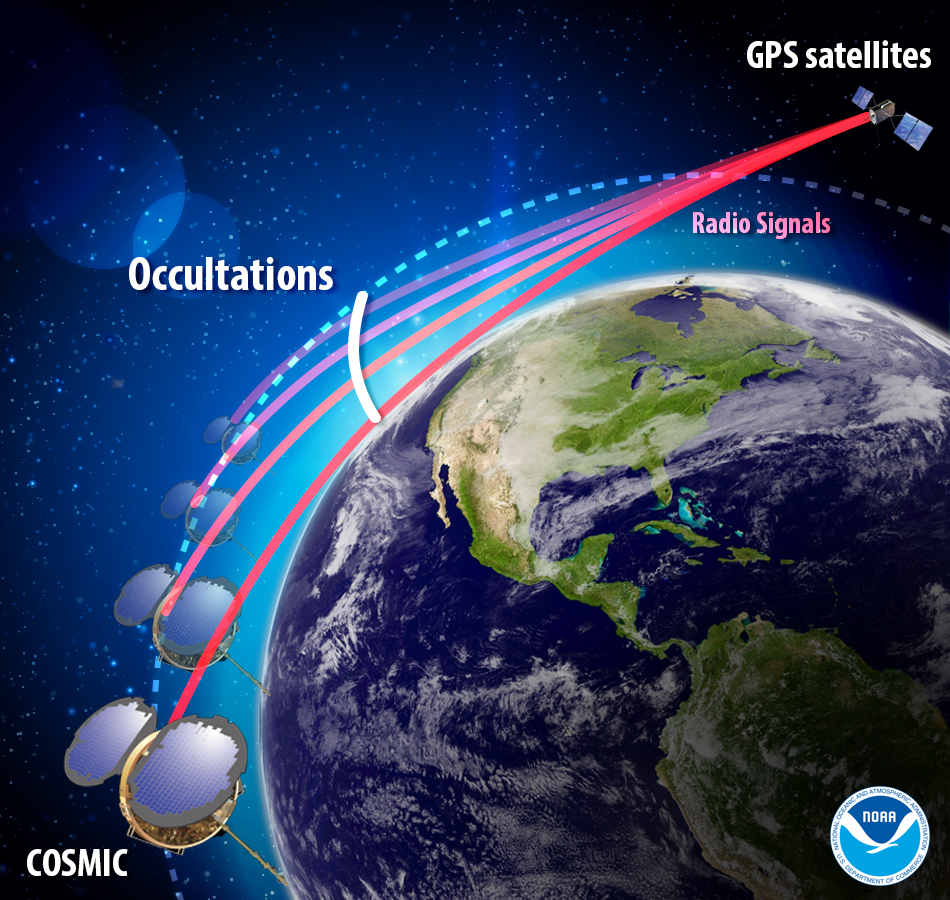COSMIC-2 Satellites Improve Tropical Weather Forecasts
A new study looked at how much weather forecast models would improve by adding more radio-occultation temperature and moisture data from satellites similar to COSMIC that were launched this past June (COSMIC-2), along with another proposed set of satellites. This second set of satellites consists of 6 satellites that stay near the equator and 6 more that move north and south somewhat close to the poles, what we call high-inclination orbit. The work uses a technique known as an Observing System Simulation Experiment (OSSE). Observations like real ones that this new set of satellites would produce are created and added to a weather forecast model along with the data that are usually available. This study also investigates the impact of reducing the number of satellites for the high-inclination orbit from 6 to 4, and the impact of slightly degrading the 6 satellites in high-inclination orbit to the older COSMIC level of accuracy.

- The biggest forecast improvement from the 6 COSMIC-2 satellites near the equator is in the tropics, and the addition of a high-inclination orbit constellation is necessary to improve weather forecasts globally.
- The largest impact from reducing COSMIC-2 from 6 to 4 satellites is to slightly degrade weather forecasts in the northern hemisphere outside the tropics.
- The impact of degrading the 6 high-inclination orbit COSMIC-2 satellites to COSMIC level of accuracy, in terms of penetration into the lower troposphere, is mostly neutral.